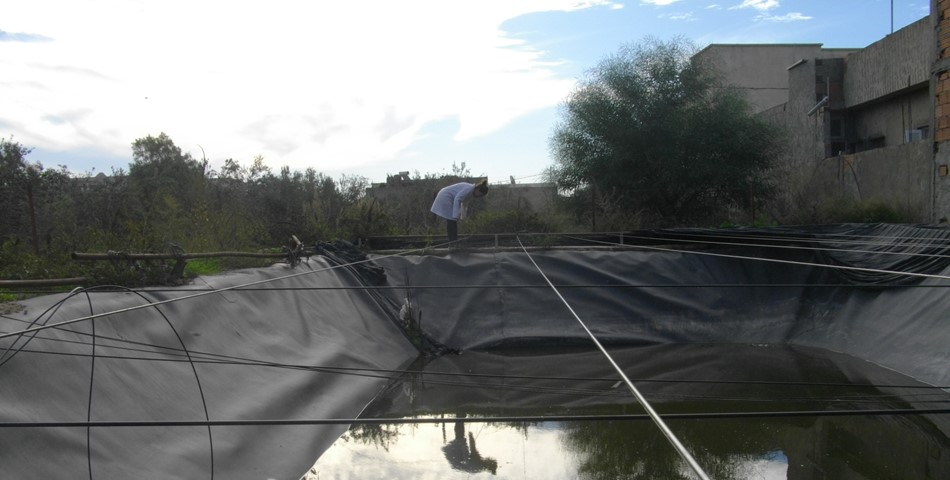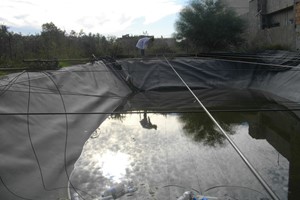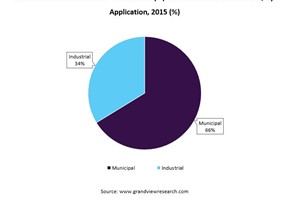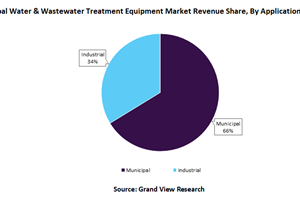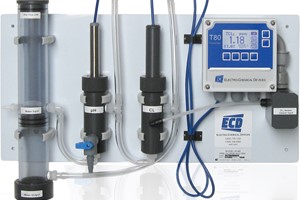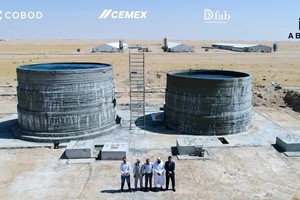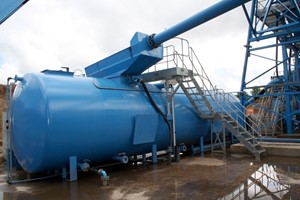The Middle East and North Africa region (MENA) is the most water scarce region of the world. Ninety percent of its land is located in dry and semi-dry areas. In addition to water scarcity, population increase, economic growth, improvement of the living standards, industrialization and tourism have put more pressure on water resources and their use. The scarcity of water resources are further aggravated by the impact of climate change particularly the decrease of rainfall and increase of temperatures. Therefore, exploring new non-conventional water resources such as treated wastewater (TWW) has become highly important in the MENA region. In Tunisia, only 25 percent of about 240 million m3 were used.
This limited use of TWW is caused by many factors such as the low quality of the water treatment caused and the low capacity of the wastewater treatment plants. A potential new source of water supply is greywater, the wastewater produced in a household without the toilet wastewater (blackwater). Greywater represents 50 - 80 percent of the total wastewater from households and includes wastewater from baths, showers, washing machines and dishwashers, laundries and kitchens. The chemical composition of greywater varies greatly and reflects the lifestyle of the residents and the chemicals used in the household for washing-up, laundry etc.
It often contains high concentrations of easily degradable organic material, nutrients, metals and other toxic pollutants. Untreated greywater can contain far lower densities of pathogens than effluent water from a traditional wastewater treatment plant. Treated greywater can thus be expected to have a much better microbiological quality than any kind of mixed wastewater.
Currently there are only very few and mostly local regulations and guidelines for the recycling of greywater which mainly focus on healthy and environmental impacts. The guideline released by the World Health Organization (WHO) in 2006 only outlines the microbiological requirements without considering physical and chemical parameters. Greywater is often used for landscape and crop irrigation.
It can be also used for toilet flushing, washing of vehicles and windows and fire protection. Many countries have already started to use it, e.g. in several projects in Jordan where wastewater from households, children playground, ablutions of worshippers, was collected and reused to irrigate ornamental plants, shrubs and olive trees. Although Germany is not considered a water-poor country, the greywater aspect has been dealt with a great interest. Domestic greywater reuse is legal, but must be registered with the Health Office. It is mostly used for toilet flushing and garden irrigation. Sweden and Norway have also done research and have implemented greywater systems in some student dormitories and apartment buildings.
In Tunisia, experiences with greywater have started in 2010 with two projects focusing on the greywater treatments and reuses in peri-urban areas. These projects are “The sustainable water management, concepts towards a ZERO outflow municipality” conducted by the Center for Studies and Research in Water Technologies (CERTE) in a student house building and the PURE project “Use of rainwater and greywater in agriculture to improve the socio-economic conditions of the population of Soukra-Ariana,” supported by Canadian institute CRDI and coordinated by the NGO UNESCO-ALECSO Club Association of Ariana - Tunisia. This project was started 2009 in the Soukra area located 6 km northeast of the Tunis city. First, 11 farm households were equipped with greywater treatment system (Vertical-flow planted filter). The system was designed to treat all wastewater from the house except blackwater from toilets.
Systems of greywater treatment
There are different systems for greywater treatment. In some of them greywater is immediately reused, without treatment or storage. These include systems that divert greywater into tanks for toilet flushing, systems for irrigation and systems that divert grey water to treatment wetlands. These systems typically involve some filtration to capture lint, hair, fats, grease, etc.
These systems are inexpensive and require no additional land, but are only useful on plots that have vegetation or are unpaved to allow infiltration. Greywater processing can also be done by reed bed filters (constructed wetlands) where the purification works similar to aerobic biological treatment. The biological degradation of dissolved matter is done by aerobic bacteria fixed on the filtering support and on the layer of accumulated surface deposition. There are two types of constructed wetlands: reed bed filters with vertical flow and reed bed filters horizontal flow.
The advantage of the use of reed is their well-developed root system. These roots accumulate biomass and allow the plant to attach to the substrate. The strong root system also facilitates the attachment of purifying bacteria on the rhizomes which clean effluent and degrade the organic matter. In our study, greywater treatment systems have been installed in two farms.


Each greywater unit is composed of basins for treated and untreated greywater and soil-box planted with reed. The first basin collects untreated grey water from sink and shower. Planted soil-boxes planter a planted soil-box is one of the basic elements of a good grey water system. The idea is that the GW is cleaned during the flow through several layers. The water enters the soil box through gravity fed pipes so the plants have the first contact with the soil. The plants are taking up a part of the water with their roots, the rest is percolating through the soil into a sand layer for a second stage of cleaning.
After the sand the water travels through a gravel layer and finally through a coarser stone layer at the bottom of the box. Each layer can be separated by a membrane filter to filter out larger particles and to separate the layers from each other once the water has percolated the soil-box, the water is collected in a basin covered with a geotextile membrane. The treated greywater is used to irrigate olive trees planted on an elevated soil bed with 1 m height to protect the soil salt and shallow water.
System evaluation
To evaluate the effectiveness of the system and the risks for agriculture, the quality of the water before and after treatment was periodically monitored. The following parameters were analyzed: pH, salinity (EC and ionic composition), heavy metals, contents of oxygen consuming compounds (BOD and COD), and some microorganism contents. Because there is no standard for greywater use, the quality data was compared to the Tunisian Standard for the treated wastewater reuse in agriculture (NT106.03).
Treated with a vertical- planted filter, the greywater collected from the farmer houses showed slight variations of pH and salinity after treatment while remaining below the NT106.03. Metal trace elements showed increases in their levels after domestic uses. Metals in greywater may originate from corrosion of the pipe system and from dust, cutlery, dyes and shampoos etc. used in the household. Metal levels in treated greywater did not exceed the Tunisian Standard for Co, Cr, Cu, Fe, Mn, Ni, Pb and Zn. Grey water was monitored before and after passing through the treatment system and the results was compared with drinking water and Tunisian specifications NT 106.03.
The physico-chemical properties of greywater samples collected from various households varied widely. Greywater pH values ranged from 7.6 before treatment to 8.1 after treatment. The initial pH of drinking water was 8.3. The Electrical conductivity (EC) ranged from 2.10 to 2.70 dS/m while values in drinking water are approximately 1.19 dS/m. The greywater BOD5 and COD values varied from 35.85 mg O2/l before treatment to 10.69 mg O2/l after treatment for BOD5 and from 156.88 mg O2/l before treatment to 52.88 mg O2/l after treatment for COD. Total coliform (TC) counts in greywater ranged from 1.1.105 to 4.6.102 million colony forming units (CFUs) per 100 ml. Fecal coliforms (FC) counts in greywater were from 3.0 x 103 to 7.4 x 105 CFU/100 mL. E.coli (EC) counts in greywater were from 1.1.104 to values below 1 CFU/100 ml CFU/00 mL. All samples after greywater treatment did not exceed the standard specifications of the WHO.
The treated greywater was used irrigation of 50 olive trees in both farms. The trees were planted with 5 cm diameter and 150 cm height. After the planting in 2009 the trees produced about 3 kg of olive per plant. Finally, these preliminary results show treated greywater can be safely used for urban farming and its use should be extended to its full potential.
Hanen FILALI
National Institute of Rural Engineering, Waters and Forest
IRESA/Carthage University
Hanenfilali.26@gmail.com
Dalila SOUGUIR
National Institute of Rural Engineering, Waters and Forest
IRESA/Carthage University
souguir_2004@yahoo.fr
JUZDAN Omar
Department of Land and Water Uses
Arab Center for the Studies of Arid Zones and Dry lands – ACSAD, Damscus
omarjuzdan@gmail.com
Georg HOERMANN
Dep. Hydrology and Water Resources Management
Kiel University, Germany
ghoermann@hydrology.uni-kiel.de
Mohamed HACHICHA
National Institute of Rural Engineering, Waters and Forest
IRESA/Carthage University




